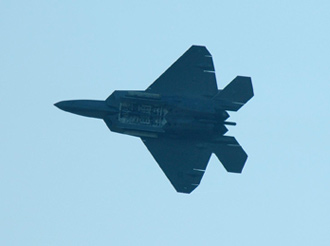A tell-tale glimpse of China's stealth technology


U.S. Intelligence officials aren't exactly sure what to make of China's new stealth fighter, now that the prototype is no longer just a rumor.
Not too long after photos of a mysterious aircraft surfaced on the internet, Defense Secretary Robert Gates said that Chinese president Hu Jintao openly acknowledged to him to that the Chinese military had just completed a 15-minute test flight of the J-20 fighter jet.
It's the type of answer that only beckons more questions.
"China is investing in very high-end, high-tech capabilities and the question that is always out there is to try to understand exactly why," Admiral Mike Mullen, head of the Joint Chiefs of Staff told reporters in Washington.
The revelation is a testament to China's rapidly rising military prowess, and a surprisingly bold statement considering the country's reputation for secrecy. Pentagon officials have tried to reassure the American public that the emerging superpower still has a ways to go with its stealth technology.
The Wall Street Journal reports:
"We are aware that the Chinese have recently been conducting taxi tests and there are photos of it," said Pentagon spokesman Col. David Lapan. "We know they are working on a fifth-generation fighter but progress appears to be uneven."
But the report goes on to say that some in the intelligence community believe that China will be capable of delivering a serviceable stealth fighter in a fairly short time frame of eight years.
And interesting enough, a closer examination of the J-20 fighter jet on Fast Company magazine's website suggests that the Chinese may have borrowed heavily from the U.S. military's own F-22 Raptor design, which features fifth-generation stealth technology.
The noted similarities between the J-20 and the F-22 include:
- A curvy aerodynamic design shape that minimizes flat surfaces, preventing radar from cleanly bouncing back to the source.
- Angular air intakes that are positioned so that they don't form corner reflectors.
- The use of materials that appear to be better at absorbing radar than metal.
- The potential ability to fly at supersonic speeds without using its afterburner. This feature, referred to as supercruise, lowers the aircraft's infrared signature significantly.
Here's footage of the J-20 prototype during its test run:
Photo: NASA
Related on SmartPlanet:
- Lockheed Martin F-35B: $83 million supersonic stealth jet that can hover in place
- BAE Systems’ Taranis: $214 million unmanned stealth jet can strike targets across oceans
This post was originally published on Smartplanet.com